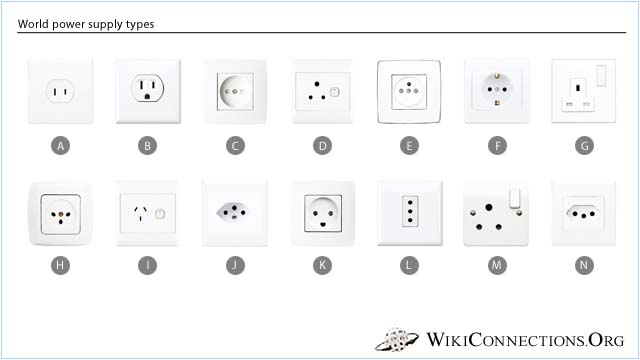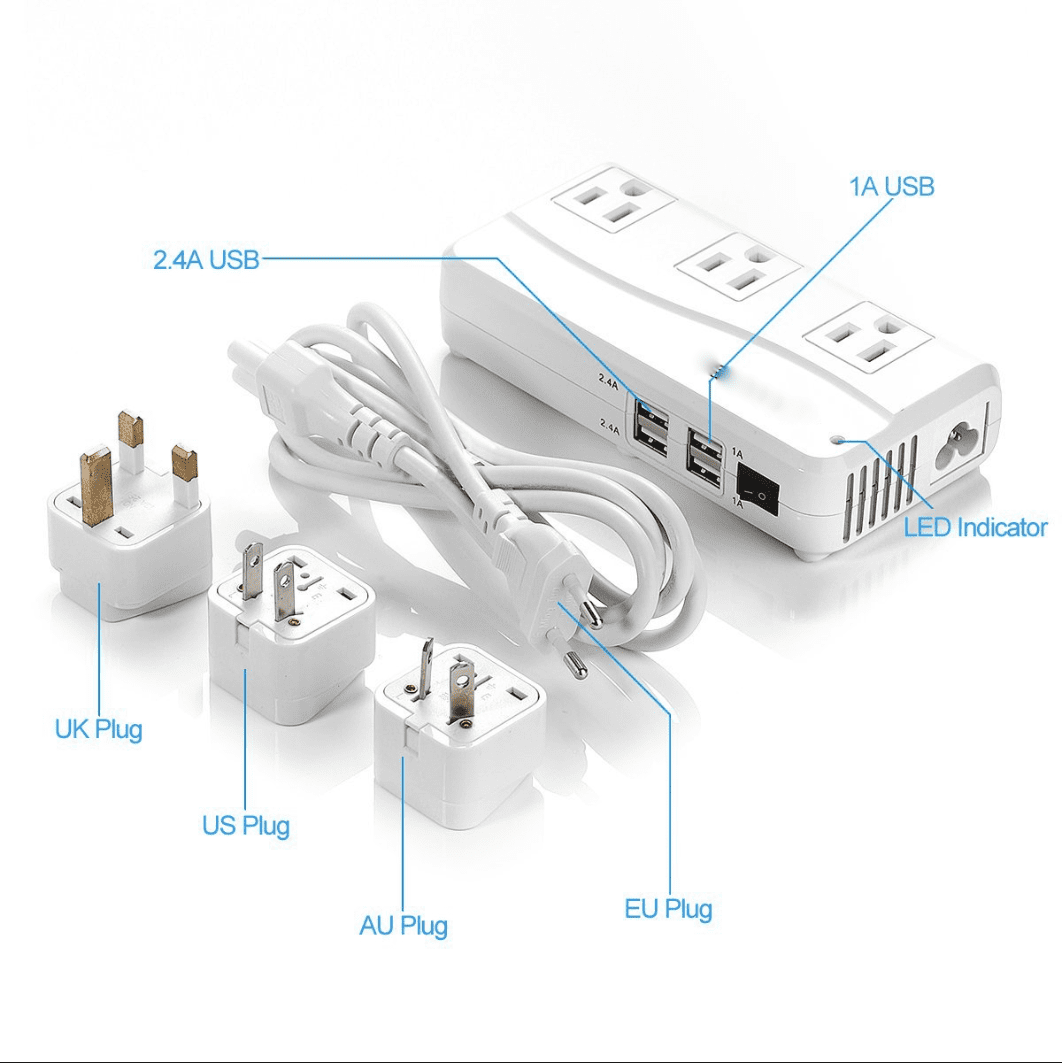You’re finally going to do it! You’ve saved enough money, vacation time, frequent flyer miles and/or hotel points to take that once-on-a-lifetime trip to London, Tokyo Disneyland, New York City, South Africa, Niagara Falls, Paris or some other place you’ve always dreamed about. Your stuff is all packed and your itinerary is all ready. But here’s a question – are you prepared to charge your electronics there? Your phone, tablet, laptop, curling iron, electric toothbrush? Because not all electrical plugs around the world are the same.
Believe it or not, there are currently FIFTEEN different types of electrical outlets in use around the world and which one is used in the place(s) you’re visiting will vary from
country to country – there’s a list of them all, with photos, if you go to the website on this page. So before you leave, it is VERY important to know if you will need an adaptor so you can use that country’s outlets.

Photo courtesy of wikiconnections.org. I love K (Denmark and Greenland)…it’s so HAPPY! Not in photo: Typo O, used exclusively in Thailand.
Plug adapters are relatively easy to find – they’re usually available at travel/luggage shops, some nationwide drugstores, big box stores and big and/or travel-related online stores. Your hotel may even have one for you to borrow (raise your hand if you think they keep the ones their guests forget to take with them?). You just have to make sure that the input of the adapter will fit your plug and the output will fit the country you’re going to. Heads up that some pieces American electronic equipment have a “grounded” plug and those 3-prong plugs will need an adapter to fit into 2-prong outlets.
BUT THAT’S NOT ALL!
Besides making sure that you have an adapter so you can use the outlet in that country, you also need to look into the voltage that country uses. If you’re in the USA, if you go to Canada, Japan or most of the Caribbean, you should be OK. But if you go to England, their outlets, besides needing an adapter for our stuff to fit, put out 230 volts. That’s awesome for them, but in the States our electronic equipment is made to accept 110 volts. So if you use an adapter for your SLR camera battery charger and plug it into the wall in your hotel in London, there’s a good chance you’re going to fry your battery/charger and that’s not good. This page has a list of virtually every country in the world, the voltage and hertz it uses and what plug type is needed.
SO WHAT DO YOU DO?
Well, if you go to a country that uses/offers both 110 and 220, such as Belize, Brazil, Cuba, Guyana, etc., you should be OK with just an adaptor, providing you MAKE SURE YOU USE THE PLUG WITH THE VOLTAGE YOUR HOME COUNTRY USES. And if it’s not marked, or you’re not sure, either ask or just don’t use it, just to be on the safe side.

Example of typical power converter
But if you’re going to a country who you know outputs power that’s not what you use at home, you’re going to need a power converter. Those are not as easy to find as adapters, although online entities like Amazon have lots of options (I’m not saying to use Amazon, by the way. I don’t care where you buy it. But they’re a good place for descriptions/pictures/reference). Your main search words would be “voltage converter” and “220V to 110V” (if you live in the US). If you look for the power converter on a place like Amazon, I would suggest specifically looking at reviews and not necessarily for the cheapest item because, like many electronics, you get what you pay for and you don’t want to be stuck in a foreign country with a broken converter and no way to charge your stuff. Anyway, they make some cool power converters nowadays that give you multiple AC outlets (double check that they carry an adapter for the country you’re going to. Thailand and Brazil, for example, each use their own adapter that no one else does), multiple USB charging ports and the most-often used adapters already included. Just make sure to check the wattage requirements of your devices prior to using, just to be sure. And as I wrote in this post, don’t forget to bring an extension cord so you have a little more freedom of movement for your power converter!
On VERY rare occasion, some high end hotels in Europe, the UK, etc. will have American-style 110 outlets, besides their regular 220 ones, specifically because so many of their clientele are Americans. The same goes for US-based hotels that offer 220 options. I’ve happened upon this a whopping TWO times in all of our travels. It was WONDERFUL. Rare, but wonderful.
EXEMPTIONS
There are a few items for US consumers that are already ready for both 110(ish) and 220(ish) voltage. Many laptops and notebooks are automatically dual voltage (there may be a sticker on the brick of your original charging cord – look for something like “100/240V, 50/60HZ”), although some older laptops use a switch to change its voltage, so check before you plug in. ALWAYS check thoroughly before plugging your equipment in, or you may wind up with a fried laptop. And that would suck.
IN CONCLUSION
“In conclusion?” I feel like I’m doing a book report or a dissertation or something☺. Anyway, bottom line is, if you’re going to a foreign country, DO YOUR RESEARCH and GET THE EQUIPMENT YOU NEED BEFORE YOU LEAVE! Here’s a quick “cheat sheet,” courtesy of Cheapflights.co.uk:

Like this post? Please share it! We have plenty more just like it and would love if you decided to hang around and clicked the button on the top (if you’re on your computer) or the bottom (if you’re on your phone/tablet) of this page to follow our blog and get emailed notifications of when we post (it’s usually just two or three times a day). Or maybe you’d like to join our Facebook group, where we talk and ask questions about travel (including Disney parks), creative ways to earn frequent flyer miles and hotel points, how to save money on or for your trips, get access to travel articles you may not see otherwise, etc. Whether you’ve read our posts before or this is the first time you’re stopping by, we’re really glad you’re here and hope you come back to visit again!

2 comments
[…] for newbies explained the difference in plugs, outlets and voltage around the world, so if you travel internationally, you can be prepared before you go. Cuz fried electronics are not […]
[…] you need in terms of plug adapters and converters so you don’t fry your electronic equipment (click here to learn more about what you’ll […]